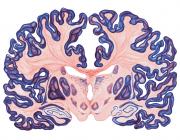Temporal Dynamics and Response Modulation across the Human Visual System in a Spatial Attention Task: An ECoG Study
Publication Year
2019
Type
Journal Article
Abstract
The selection of behaviorally relevant information from cluttered visual scenes (often referred to as “attention”) is mediated by a cortical large-scale network consisting of areas in occipital, temporal, parietal, and frontal cortex that is organized into a functional hierarchy of feedforward and feedback pathways. In the human brain, little is known about the temporal dynamics of attentional processing from studies at the mesoscopic level of electrocorticography (ECoG), that combines millisecond temporal resolution with precise anatomical localization of recording sites. We analyzed high-frequency broadband responses (HFB) responses from 626 electrodes implanted in 8 epilepsy patients who performed a spatial attention task. Electrode locations were reconstructed using a probabilistic atlas of the human visual system. HFB responses showed high spatial selectivity and tuning, constituting ECoG response fields (RFs), within and outside the topographic visual system. In accordance with monkey physiology studies, both RF widths and onset latencies increased systematically across the visual processing hierarchy. We used the spatial specificity of HFB responses to quantitatively study spatial attention effects and their temporal dynamics to probe a hierarchical top-down model suggesting that feedback signals back propagate the visual processing hierarchy. Consistent with such a model, the strengths of attentional modulation were found to be greater and modulation latencies to be shorter in posterior parietal cortex, middle temporal cortex and ventral extrastriate cortex compared with early visual cortex. However, inconsistent with such a model, attention effects were weaker and more delayed in anterior parietal and frontal cortex.
Journal
Journal of Neuroscience
Volume
39
Issue
2
Pages
333-352

